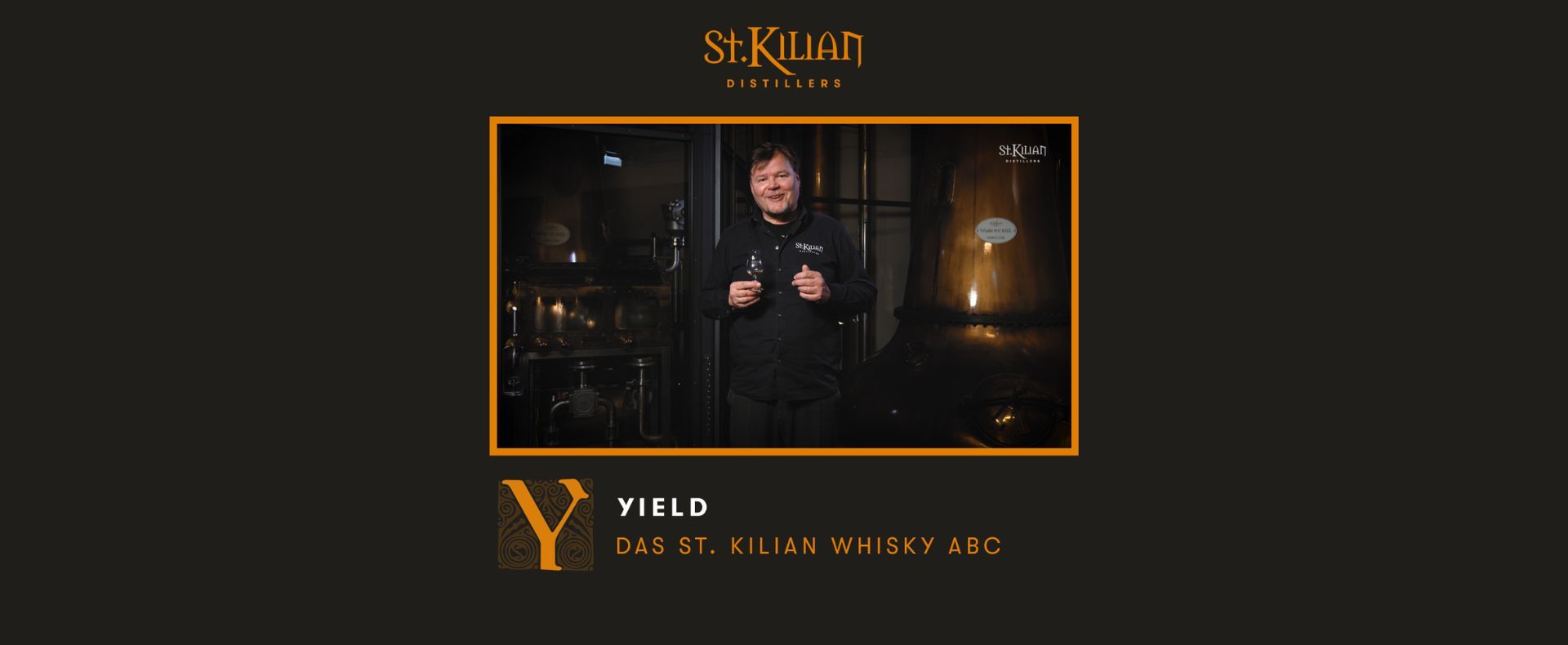Y - like Yield

What does Yield mean?
From a production perspective, yield is the English term for yield.
What is meant by yield?
This is the amount of pure alcohol obtained in the production of New Make Spirit after the second distillation and including the amount of alcohol in the pre- and post-distillation stages. This total quantity of spirit produced, expressed in liters of pure alcohol (LPA), relates to a specific quantity of starting product, namely one ton of barley malt.
What is one liter of pure alcohol (LPA)?
As with other alcoholic beverages, the alcohol content of the contents must be indicated on the label of whisky bottles in percent by volume. In the case of St. Kilian whisky, this alcohol content is at least 46 percent by volume. Accordingly, a 1-liter bottle (1,000 ml) of this whisky contains at least 460 ml of pure alcohol.
What is the yield for distilleries?
Distillery yield is usually calculated using weekly production figures. For Scotch whisky distilleries, the yield is typically in a range between 390 and 420 LPA per ton (to) of barley malt. At St. Kilian, we obtain an average yield of around 400 LPA/ton of malt. Thus, with our achieved alcohol yield, we are exactly in the range that Scottish distilleries achieve with their equipment.
What is the importance of yield for distilleries?
The barley malt feedstock is cost-intensive. Malt costs money. This means that the more LPA is achieved per ton of barley malt, the more cost-effective the production process becomes. However, this maximization of alcohol results in intensive leaching of the malt and especially of the husks during mashing. On the one hand, these husk extracts can release unpleasant aromas into the wort; on the other hand, they can also interfere with fermentation and thus possibly negatively influence the formation of desired aroma substances during fermentation. For this reason, St. Kilian Distillers does not strive for the highest alcohol yield at any price, but is always concerned with achieving the best possible quality while maintaining economic efficiency.
Does Yield have any other meaning?
The term yield can also be viewed from a financial perspective. Here, yield stands for return on investment or, in simplified terms, for an interest rate or return on investment.
Whisky as an investment?
You can invest money in real estate or shares, collect silver or gold coins, or invest in whisky. If you - like St. Kilian Distillers - produce single malt whisky in a very good quality and in a not too large quantity (= "rarity"), then a certain value is created. From the point of view of the founder and owner of St. Kilian, Andreas Thümmler, who is also an investment banker and venture capitalist, the subject of "whisky as an investment" is a lucrative alternative to conventional financial investments.
What whiskey bottles to collect?
It comes down to buying and collecting the right brands. This requires a lot of know-how and a good intuition. According to Andreas Thümmler, whiskies from such distilleries that have a good brand name and produce manageable quantities (premium brands) are very lucrative for a long-term investment. This is also the case with limited-edition whiskies from St. Kilian.
Are there increases in the value of whisky?
Yes, absolutely. If you've built up a veritable collection and tracked its value, you'd find that under certain circumstances it could contain increases in value. If you look at the performance of Scotch whiskies over the past forty years, average increases in value of more than ten percent are well within the realm of possibility.
Is whisky a risk as an investment?
Yes! Like any investment, investing in whisky also involves risks. In the event of a total loss, the liquid content still remains as consolation. Mostly, however, the investment in whisky can at least be considered as value-preserving. In signs of significant inflation, however, possibly even as value-increasing.